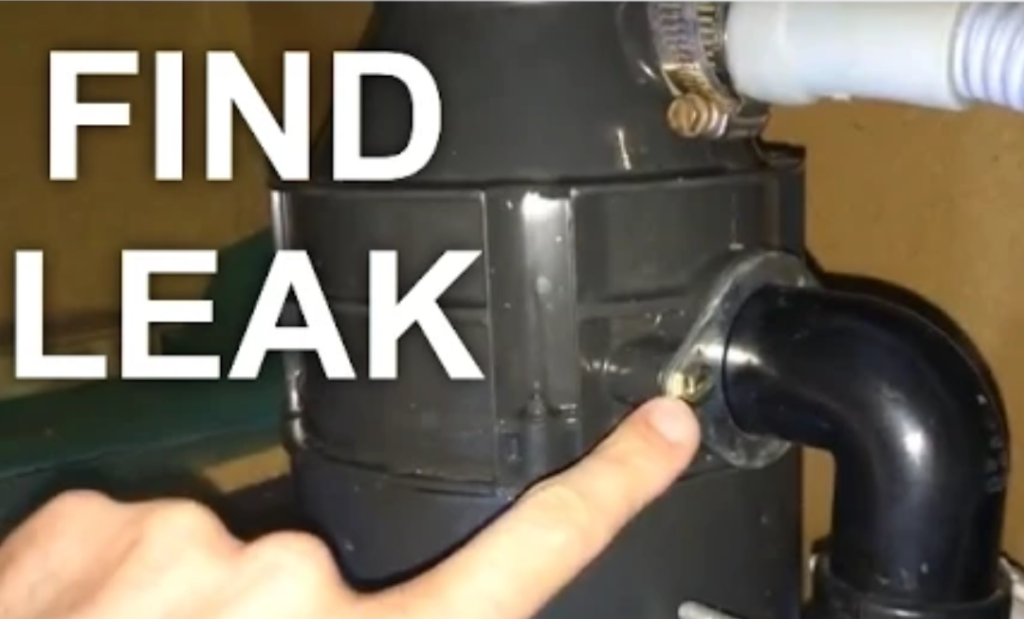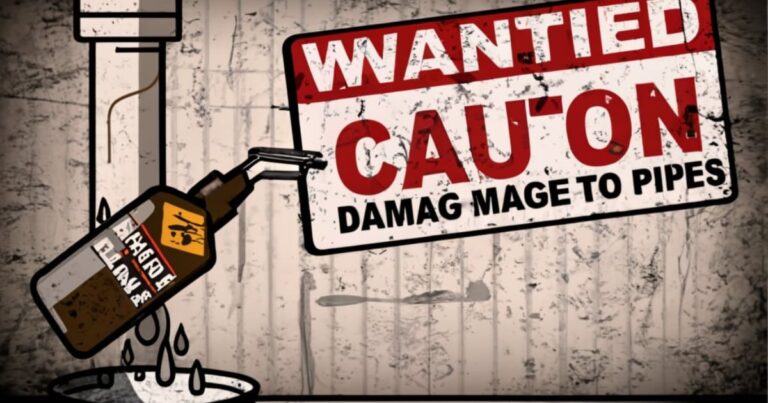When you notice pools of water under your sink or unpleasant odors wafting your way, address a leak in the garbage disposal that needs quick attention and to be repaired.
Leaking in garbage disposal can result in various problems. These may be due to loose connections, weak or worn-out seals, or even cracks in the disposal tubes or chamber. Many of the issues causing these leaks can be resolved quite easily.
Garbage disposal is a completely simple system. Firstly, you need to identify where exactly the leak in your garbage disposal is coming from. This crucial step will determine the proper way forward. Dry the exterior of the unit and the pipes thoroughly, then allow water to run through the disposal.
Observing where the water begins to leak from can pinpoint the trouble spot. Sometimes, the sink flange or the connection between the sink and the disposal is the culprit. Other times, it might be the dishwasher hose connection or the discharge drainpipe.
Table of Contents
Identifying the Source of the Leakage

You’ll usually find a garbage disposal leak in one of three places:
The top: This is where the garbage disposal connects to the sink. A leak here might suggest a problem with the sink flange or plumbing putty.
The side: If the leak is coming from the side, it’s likely an issue with the drain lines.
The bottom: Leaks from the bottom usually signal that the unit’s inner shell is broken.
What are the causes of a leaking garbage disposal?
- One of the most common reasons for disposal is a worn or broken sink flange. The sink flange is the part of the exhaust that connects it to the sink. Over time, the seal may also wear out or the flange itself might also put out, inflicting leaks.
- Another cause could be a leaking drain pipe. This pipe is the part of the disposal that conveys the wastewater to the drainage. If the pipe isn’t sealed well or has cracks or holes, water can leak out.
- Leakage can also occur due to broken disposal systems. If the air filter curtains are cracked or the seal in the tube is damaged, water can leak out. This is mostly a signal that the exhaust gadget needs to be replaced.
- Improper alignment also can motive leaks. If the waste disposal place is not nicely designed, it can no longer be nicely covered, ensuing in a capacity leak. This is not unusual in DIY installations where the installer might not have tightened all the connections quite tight or no longer used the right seals.
- Finally, leakage can occur due to clogged drainage. If the drains end up clogged, water can return up and waft via the pipe. This often consequences in malfunction or cessation of airflow.
What tools are needed for fixing a leaking garbage disposal?
Fixing a leaky garbage disposal may seem tough, but it is an easy step. With the right tools and a little bit of know-how, you can tackle this issue with confidence.
These tools may be used to fix leakages.
Wrench is a critical tool that you need. This humble device will be your secret weapon when it comes to loosening and tightening any troublesome components. You’ll particularly need a wrench if the leak stems from the screws or bolts.
Screwdriver is another device as a way to assist. Both flathead and Philips head screwdrivers can be required, depending on the screws you use for your garbage disposal. These will be used to put off or tighten the screws in the course of maintenance.
Plumbers putty is any other important product. This is a sort of sealant used to prevent leakage in water handling programs. You will use this to create a watertight seal between the sink flange and the waste disposal.
Channel-lock pliers are also useful. They can capture, twist, and manage components of the exhaust machine, making it a versatile tool for this sort of maintenance.
A bucket to spill out the leaking water from the sink or drain.
A good pair of gloves is also very necessary during repair. When you are tackling a leak, your hands might need to get into some tight and potentially wet places. Rubber gloves will not only protect you from any sharp edges inside the disposal unit but also keep your hands dry.
The flashlight is also important. This simple and often overlooked tool will illuminate those shadow-filled spaces beneath your sink. Working in such a dim environment poses difficulties, especially if you’re straining to see small components. A flashlight will ensure you see every nook and cranny with perfect clarity.
With these tools by your side, you are well-equipped to handle that stubborn garbage disposal leak. Now, grab that wrench, pull on those gloves, shine that flashlight, and embark on your leak-fixing.
Fixing Leaks from the Sink Flange
Is the leak appearing at the top of the unit, where the disposal connects to the sink? That is called the sink flange. This leak usually occurs due to a failed plumber’s putty seal. Fortunately, fixing this is not as tough as it sounds. You will want to lessen the quantity of garbage, smooth out the antique parts of disposal, and replace them with new ones. Finally, you’ll reinstall the garbage disposal.
Addressing Leaks in the Dishwasher Hose Connection
If your leak is located at the hose connecting your disposal to your dishwasher, you could be seeing a worn-out hose or a loose connection. Usually, tightening the clamp or replacing the hose can solve the problem.
Mending the Discharge Drainpipe Leak
Is water leaking from the pipe from the exhaust gadget into the drain? This can be a signal of an unfastened bolt or worn gasket. Try to tighten the knots. If the leak continues, it’s time to replace the unit.
What safety precautions need to be taken whilst cleaning a Disposal?
As you begin to prepare your garbage disposal, protection must be a priority. Protect yourself from hazards like electric-powered surprise and sharp wood, in addition to long-term problems like repetitive strain injuries.
- Never put your hand in the garbage disposal unit.
- The blades of the disposal machine are razor-sharp.
- Accidental start-ups can happen even if the machine is off.
- Always unplug your garbage disposal before starting any kind of repair.
- Always wear gloves and safety glasses during repair. Sharp blades can cause small cuts on the hands.
- Don’t put your hand or fingers directly into the garbage disposal. Use always a wooden plier if needed.
- Make certain the region around the rubbish disposal is dry and clean before you start painting. This can help save them from slipping and falling, as well as make it less difficult to spot something else that is shifting.
- Always comply with the manufacturer’s instructions on your precise garbage disposal gadget. This can help make certain that you take all vital protection precautions and maintain the equipment properly.
- Finally, as soon as you have cleaned up the garbage, make certain to pay close attention to the rubbish disposal system. Turn the electricity back on and run water via the exhaust machine to test for any leaks or performance problems.
- Make sure the vicinity around the garbage disposal is dry and smooth earlier than you start repairing. This can help save them from slipping and falling, in addition to making it easier to identify something else that is shifting.
Conclusion
In conclusion, removing or repairing leaking garbage may additionally seem like a frightening undertaking at the beginning. However, with a little study and the right gear, you could fast clear up this issue. Leaks can come from things damaged, unfastened connections, or poor layout. Armed with a wrench, screwdriver, pliers, and plumber’s putty, you can address most leakage issues.
Whether the fault lies within the sink flange, the dishwasher hose, or the discharge drainpipe, professional help is just a call away, should the need arise.
Once you’ve completed the repair, make sure to check for performance issues or residual leakages by turning the power back on and running water through it. A dry and clean surroundings is the best proof of your successful repair.
Finally, remember the golden rule. Always observe the producer’s guidelines in terms of retaining and cleaning your garbage disposal. In this manner, you will continue to enjoy the ease of a professional garbage disposal device and avoid unexpected issues in the system.
What are the common signs of a garbage disposal leak?
The common signs of a garbage disposal leak are water pooling under the sink, dampness or moldy smell around the disposal, and rust or corrosion on the disposal unit. You may also see water dripping from the bottom of the disposal. If you notice any of these signs, it’s important to fix the leak right away.
How do I safely prepare to fix a leaking garbage disposal?
To safely prepare to fix a leaking garbage disposal, first turn off the power to the disposal at the circuit breaker. Then, put on gloves and have a bucket and towels ready to catch any water. Use a flashlight to inspect the disposal carefully before starting any repairs. Always make sure to work carefully and cautiously.
What tools will I need to fix a leak in my garbage disposal?
To fix a garbage disposal leak, you’ll need a wrench, screwdrivers (both flat and Phillips head), plumber’s putty, channel lock pliers, a bucket, rubber gloves, and a flashlight. These tools will help you tighten, seal, and see everything clearly under the sink.
What should I do if the leak is from the dishwasher hose connection?
If the leak is from the dishwasher hose connection, first check if the hose is tight. If it’s loose, use a wrench to tighten it. If the hose looks old or damaged, you might need to replace it with a new one to stop the leak.
After fixing the leak, how can I ensure the problem is completely resolved?
After fixing the leak, plug the garbage disposal back in and turn on the water to check. Make sure there’s no more dripping or water pooling under the sink. If everything stays dry while the disposal is running and after, the problem is likely fixed!












